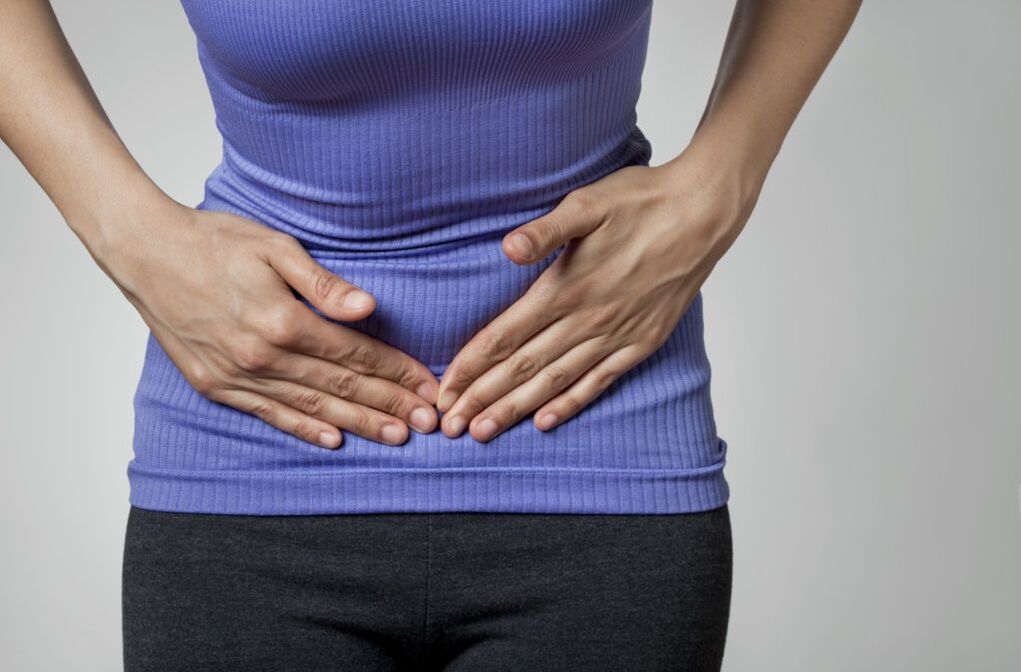Prostatitis in women is no joke, but a household name for inflammation of the vestibular glands. These glands are also called Skene's glands, and their inflammation - skinitis - manifests itself with the same symptoms as prostatitis in men. What are the characteristics and danger of this disease?
Does prostatitis occur in women?

The insidious nature of the pathology is that it is poorly detected by doctors and is rare.
Prostatitis in women occurs, but the disease is called skinitis. The glands that inflame in this pathology are located slightly below the urethra and are made of sensitive tissue.
Skene's glands are believed to be a rudimentary prostate that forms in the embryo before the genitals appear. Simply put, Skene's glands are a kind of void that develops into a full-fledged prostate gland in a male fetus and remains in its infancy in a female fetus.
It is interesting that these glands are capable of producing a specific secretion, the composition of which is identical to the secretion of the prostate in men. In addition, the PSA antigen, which is the most important tumor marker, can be found in this fluid.
Interesting!The jet orgasm that occurs in some women is a result of the activity of the Skene glands.
Dermatosis is rare. The problem is that female prostatitis is difficult to diagnose, often misdiagnosed, so there are no exact statistics on the prevalence of this disease.
Reasons for the development of skinitis
Most women are not even aware of the presence of these glands near the urethra, but when they become inflamed, acute symptoms appear, reminiscent of the signs of prostatitis in men.
Dermatosis is most often caused by an infection of the glands. The main reasons for the development of the disease:
- damage to the urethra;
- lack of hygiene;
- infection of the glands due to the spread of infection to other diseases of the genitals.
Most often, the skin is caused by opportunistic microorganisms that inhabit the female body. They can enter the glands through urine during urination or through the vagina. Under normal conditions, these microorganisms do not cause an inflammatory process. However, when the Skene glands or the urethra are injured, female prostatitis occurs. This is due to a decrease in local immunity.
Dermatosis can be allergic in nature. The use of substandard personal hygiene products can cause an allergic reaction and a decrease in local immunity, which increases the risk of infection of the glands.
Another reason for skin development in women is trauma to the urethra due to surgery or rough sex. It is also possible to damage the opening of the urethra due to urolithiasis, when the sand passes through the urethra.
"Prostatitis" in a woman is associated with an irregular sex life. Frequent changing of sexual partners and neglect of barrier contraception increase the risk of developing urogenital infections.
One factor that increases the risk of developing this disease is a general decrease in immunity. The skin can be associated with recent serious infectious diseases, hypothermia, exacerbation of chronic diseases.
Symptoms of the disease

With pathology, constant weakness and "weakness" are felt throughout the body.
After determining whether a woman has prostatitis, you need to find out how the skin manifests itself. The disease is called "female prostatitis" largely because of symptoms that resemble inflammation of the prostate in men. During disposal, the symptoms are as follows:
- frequent urge to urinate;
- urination in small portions;
- pain and pain in the urethra when using the toilet;
- pain during intercourse;
- increased body temperature;
- spasms in the area of the bladder;
- general discomfort, loss of strength.
Dermatosis is in many ways similar to cystitis in women. With this disease, the urge to urinate is constantly felt, but this need cannot be fully satisfied. Urine is excreted in small portions, which is accompanied by severe discomfort. The feeling of a full bladder persists even when you go to the bathroom.
You can distinguish skinitis from other diseases of the genitourinary system with similar symptoms by the presence of pain during intercourse.
There is no intense heat with skinitis, but the body temperature can reach 37. 5-38 degrees.
Why is prostatitis in women dangerous?
Having understood the peculiarities of this disease, patients wonder whether such prostatitis is dangerous for women. This disease can lead to dangerous complications and therefore requires prompt diagnosis and treatment.
Among the probable complications of dermatosis:
- gland abscess;
- cystic neoplasms;
- secondary infertility;
- adhesions in the small pelvis;
- deformation of the area where the inflamed glands are located;
- spread of infection to other organs in the small pelvis.
The disease is infectious and can be caused by pyogenic bacteria. In severe cases, the inflammation can progress to a glandular abscess, which is accompanied by severe symptoms and requires surgical treatment. An independent breakout of an abscess is potentially dangerous with the development of sepsis (blood poisoning).
The infection can spread through the bloodstream to any organ in the small pelvis. There is also a risk of upward spread of pathogens with subsequent kidney infection. In addition, with widespread infection, a woman can infect a partner during unprotected sex. In men, bacterial urethritis can progress to prostatitis.
Diagnostic

Ultrasound diagnostics are done to make sure there are no other diseases.
Having determined whether prostatitis exists in women and by what signs and symptoms one can suspect dermatosis, it is recommended not to self-medicate, but to seek immediate medical attention.
The main problem with the skin is a complex diagnosis. Due to the specifics of the location of the glands, their inflammation is accompanied by symptoms of inflammation of the bladder or urethral mucosa. As a result, the wrong diagnosis is often made and the wrong treatment regimen is prescribed.
The Skene gland is located in a place that is difficult to reach, so it is impossible to examine it completely. In this regard, the diagnosis is made by excluding other diseases with similar symptoms. Compulsory exams:
- Ultrasound of the bladder to rule out cystitis;
- Ultrasound of the uterus and appendages to exclude inflammation;
- smear from the cervical canal;
- bacterial culture from the cervix;
- general and biochemical urinalysis;
- a smear from the urethra.
After excluding other diseases, the treatment of dermatosis is prescribed. Often the most informative diagnostic method is urine analysis, which detects pathogenic microorganisms.
Processing characteristics
With the counting, conservative treatment is practiced. Therapy includes taking drugs from the following groups:
- antibiotics to clear the infection;
- anti-inflammatory drugs used in urology;
- antispasmodics to reduce pain;
- immunomodulators.
Usually, broad-spectrum antibiotics are prescribed or antibacterial drugs used in the treatment of cystitis. Since it is often impossible to accurately determine the causative agent of the disease, the doctor may prescribe several drugs from this group at once. Third generation cephalosporins have been proven to work.
The acute symptoms disappear one day after starting the antibiotic treatment. However, it is important to take the drugs in a course of duration set by the doctor on a case-by-case basis.
To eliminate pain, it is recommended to use antispasmodics. Simple analgesics are ineffective because the pain is associated with spasms of the urethra and bladder.
In addition, herbal anti-inflammatory drugs are prescribed, used in the treatment of cystitis and kidney disease. These drugs reduce the inflammatory process, normalize the process of urination and facilitate general well-being in various diseases of the urinary tract.
Immunomodulators are needed. They use both drugs for the prevention of diseases of the genitourinary system and fortifying agents, for example, extract of echinacea purpurea.
Preventive measures
Having understood how to heal the skin, you need to pay attention to important preventive measures. This disease is similar to cystitis - once you get sick, the risk of relapse persists for many years. To avoid this, you must:
- observe personal hygiene;
- use barrier contraceptive methods;
- have a permanent sexual partner;
- strengthen immunity.
When the first alarming symptoms appear, you should immediately make an appointment with a gynecologist and urologist. Self-medication for the skin is dangerous with chronic inflammation.
























